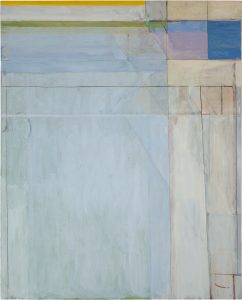Artforum: Matisse/Diebenkorn
May 1, 2017
By Ara Osterweil

It is no wonder that Richard Diebenkorn is known as a “painter’s painter.” His devotion to the medium is evidenced not only in his lush handling of paint but in his constant experimentation and his refusal to be constrained. By moving fluidly between abstraction and representation, as many prewar modernists had, Diebenkorn undermined the hard distinction between the two that circulated among midcentury polemicists. In doing so, he shaped an artistic trajectory that would come to be considered as among the most extraordinary of the post war period. Throughout Diebenkorn’s fifty-year journey from abstraction to representation and back again, Henri Matisse remained his muse. The Bay Area painter first discovered Matisse in the Palo Alto, California, collection of Sarah Stein, Gertrude Stein’s sister-in-law, while he was an undergraduate at Stanford University in the early 1940s. By the time he reencountered the work of the then-greatest living French painter at a 1952 Los Angeles show, he was already hooked.
Diebenkorn remained enthralled for the rest of his life, even traveling to Russia to see Matisse’s work at the Hermitage and Pushkin Museum and poring over his extensive collection of Matisse catalogues. Throughout his peregrinations from California to New Mexico to Illinois and back, Diebenkorn took inspiration from the French master’s endless exploration of color and form.